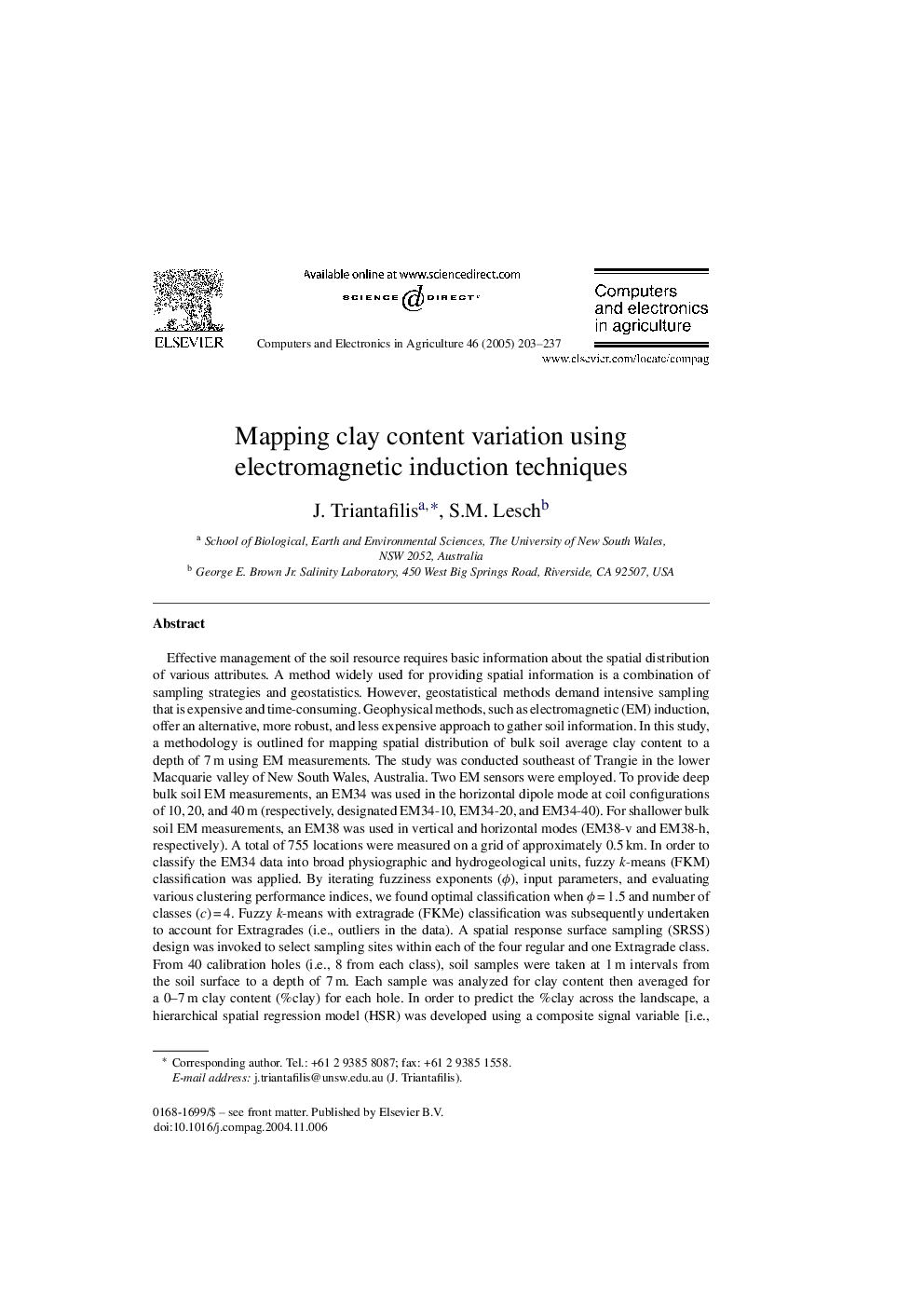| Article ID | Journal | Published Year | Pages | File Type |
|---|---|---|---|---|
| 9619917 | Computers and Electronics in Agriculture | 2005 | 35 Pages |
Abstract
Effective management of the soil resource requires basic information about the spatial distribution of various attributes. A method widely used for providing spatial information is a combination of sampling strategies and geostatistics. However, geostatistical methods demand intensive sampling that is expensive and time-consuming. Geophysical methods, such as electromagnetic (EM) induction, offer an alternative, more robust, and less expensive approach to gather soil information. In this study, a methodology is outlined for mapping spatial distribution of bulk soil average clay content to a depth of 7Â m using EM measurements. The study was conducted southeast of Trangie in the lower Macquarie valley of New South Wales, Australia. Two EM sensors were employed. To provide deep bulk soil EM measurements, an EM34 was used in the horizontal dipole mode at coil configurations of 10, 20, and 40Â m (respectively, designated EM34-10, EM34-20, and EM34-40). For shallower bulk soil EM measurements, an EM38 was used in vertical and horizontal modes (EM38-v and EM38-h, respectively). A total of 755 locations were measured on a grid of approximately 0.5Â km. In order to classify the EM34 data into broad physiographic and hydrogeological units, fuzzy k-means (FKM) classification was applied. By iterating fuzziness exponents (Ï), input parameters, and evaluating various clustering performance indices, we found optimal classification when ÏÂ =Â 1.5 and number of classes (c)Â =Â 4. Fuzzy k-means with extragrade (FKMe) classification was subsequently undertaken to account for Extragrades (i.e., outliers in the data). A spatial response surface sampling (SRSS) design was invoked to select sampling sites within each of the four regular and one Extragrade class. From 40 calibration holes (i.e., 8 from each class), soil samples were taken at 1Â m intervals from the soil surface to a depth of 7Â m. Each sample was analyzed for clay content then averaged for a 0-7Â m clay content (%clay) for each hole. In order to predict the %clay across the landscape, a hierarchical spatial regression model (HSR) was developed using a composite signal variable [i.e., ln(EM34-10)Â +Â ln(EM34-40)Â +Â ln(EM38-h)] and first-order trend surface components (i.e., Easting and Northing). The final map of %clay generally reflects the known surface clay content and provides information about the spatial distribution of subsurface %clay variability. We conclude that although the FKMe analysis did not result in an improved calibration within each class, the approach delineated similar clusters of signal readings that were useful in providing a framework to determine a soil sampling design that accounted for variations in physiography and hydrogeology.
Keywords
Related Topics
Physical Sciences and Engineering
Computer Science
Computer Science Applications
Authors
J. Triantafilis, S.M. Lesch,
